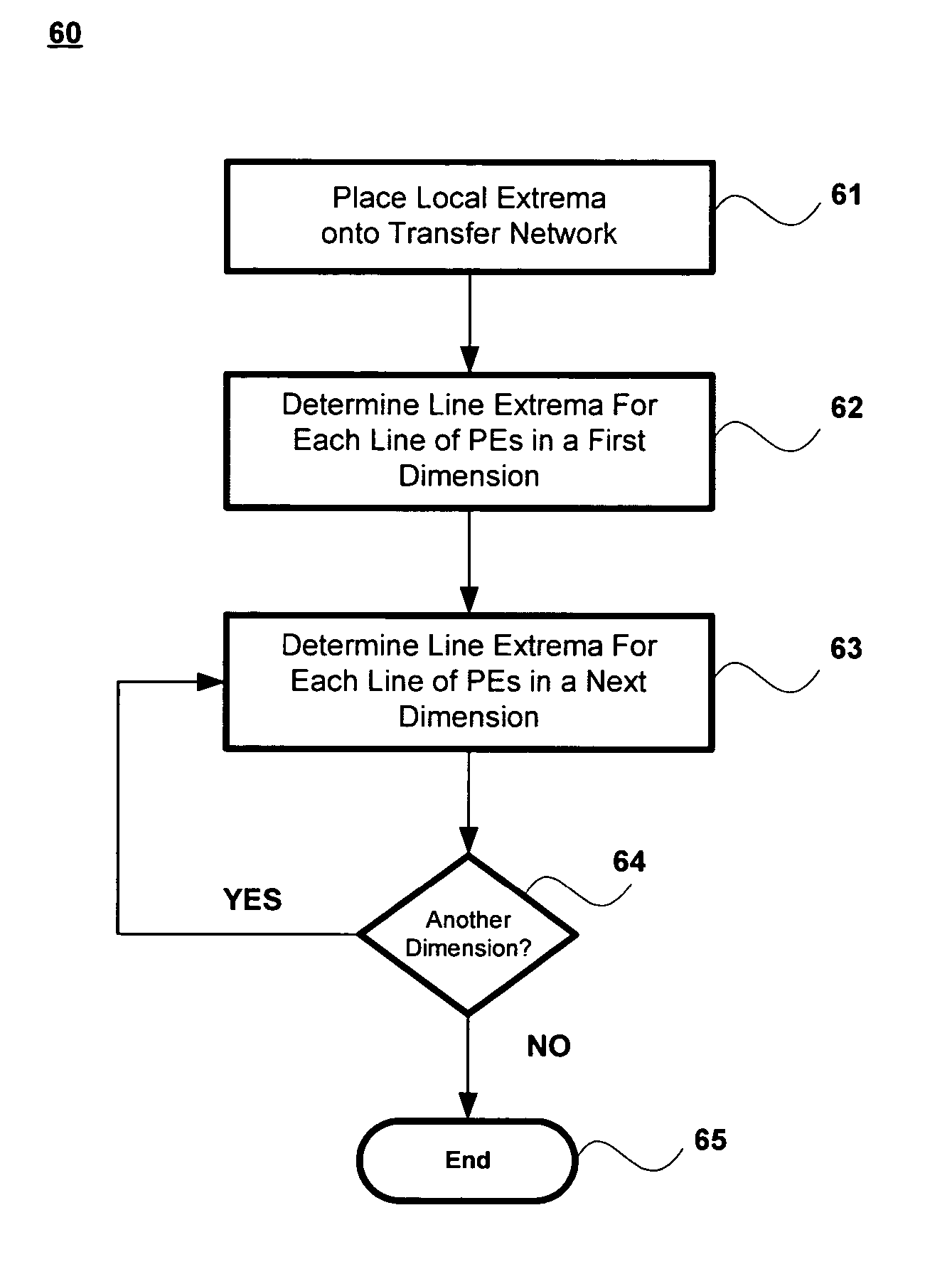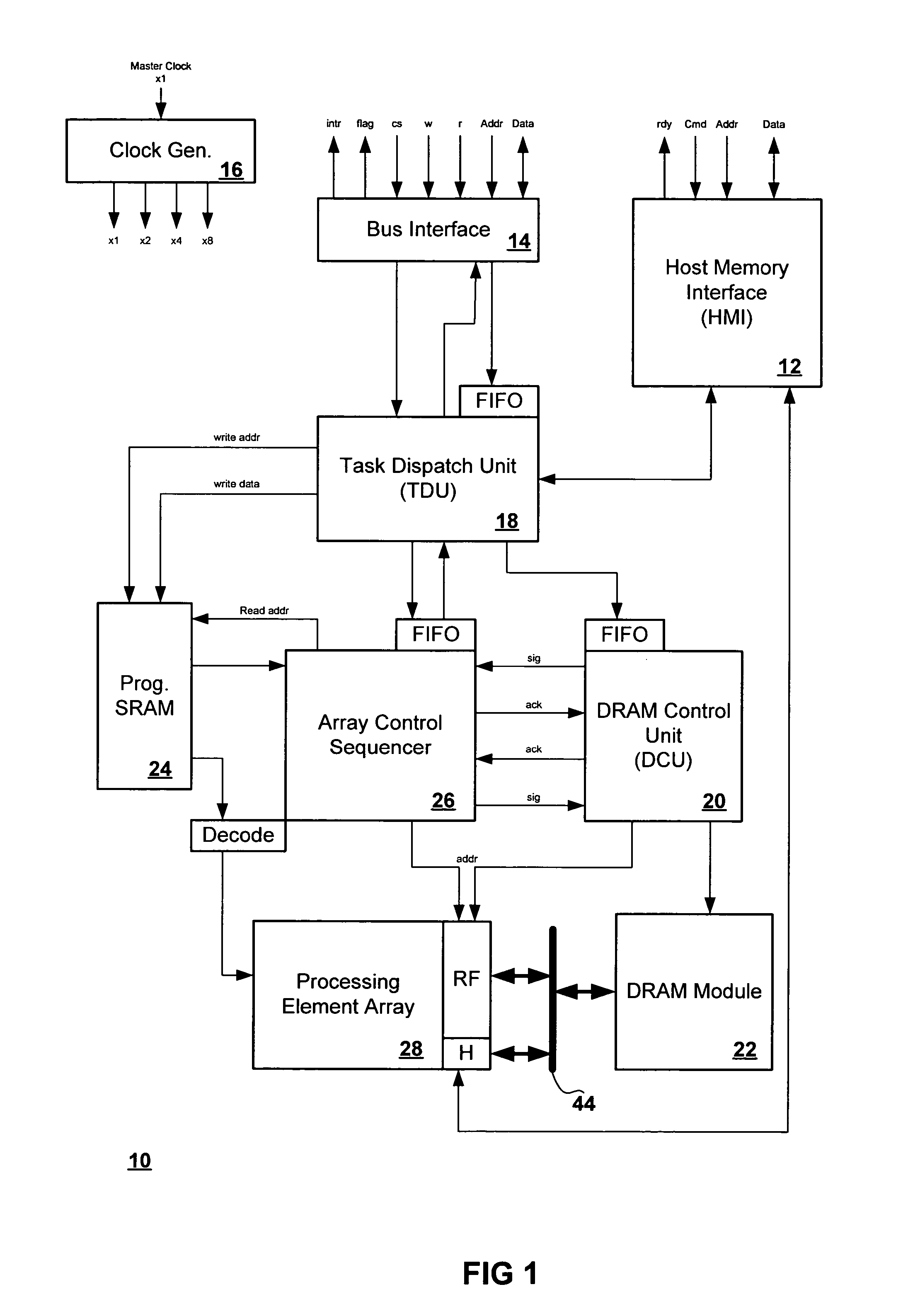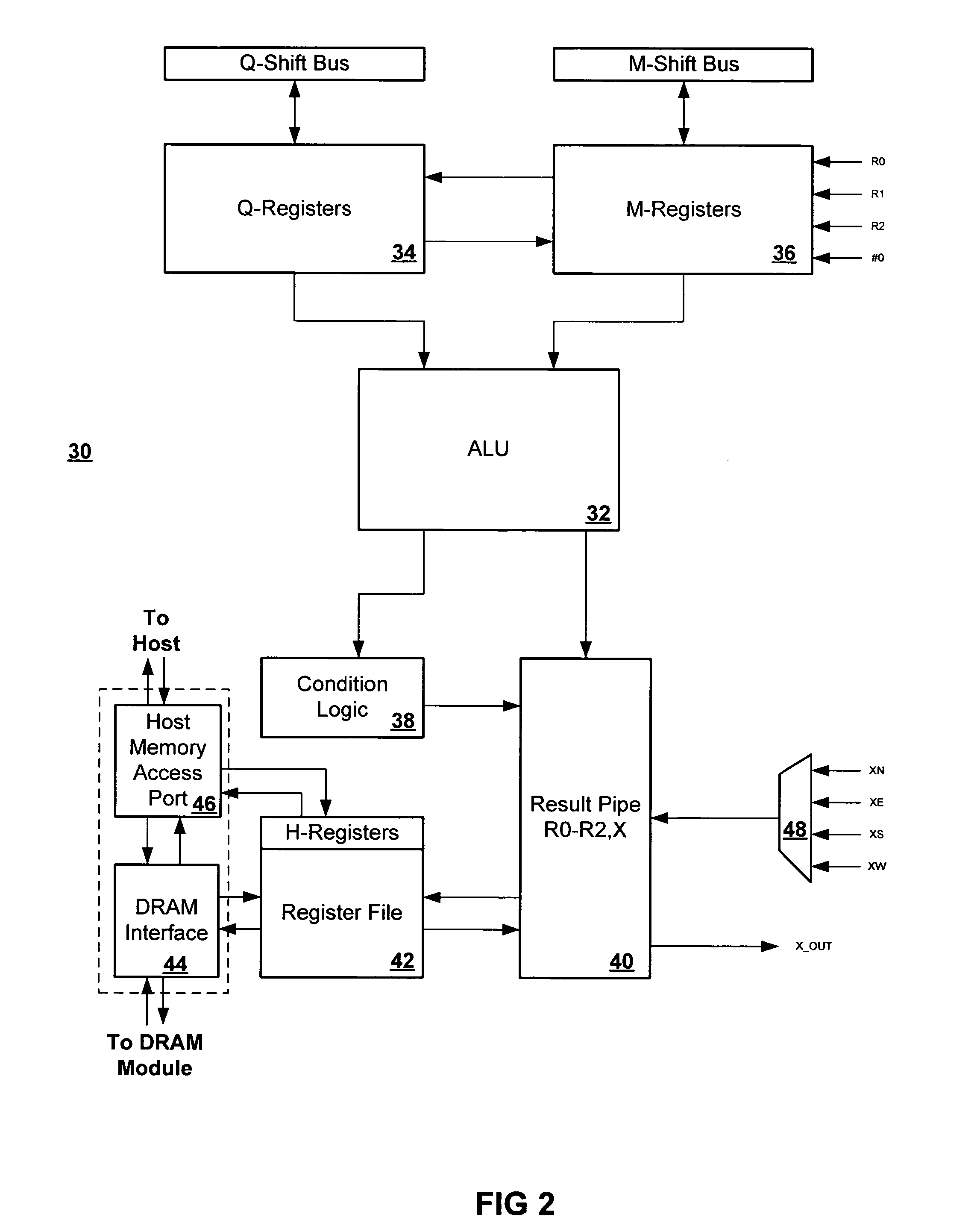Method for finding global extrema of a set of shorts distributed across an array of parallel processing elements
a technology of parallel processing elements and global extrema, applied in the field of parallel processing, can solve the problems of reducing the number of processing cycles, reducing the efficiency of the system, and reducing so as to maximize the resources of the parallel processing system and reduce the amount of lost cycles
- Summary
- Abstract
- Description
- Claims
- Application Information
AI Technical Summary
Problems solved by technology
Method used
Image
Examples
Embodiment Construction
[0027]As discussed above, parallel processing systems may be placed within one or more classifications (e.g., MISD, MIMD, SIMD, etc.). For simplicity, the present invention is discussed in the context of a SIMD parallel processing system. More specifically, the present invention is discussed in the context of a SIMD active memory. It should be noted that such discussion is for clarity only and is not intended to the limit the scope of the present invention in any way. The present invention may be used for other types and classifications of parallel processing systems.
[0028]FIG. 1 is a block diagram illustrating an active memory 10 according to an embodiment of the present invention. It should be noted that the active memory 10 is only one example of a device on which the methods of the present invention may be practiced and those of ordinary skill in the art will recognize that the block diagram of FIG. 1 is an overview of an active memory device 10 with a number of components known...
PUM
 Login to View More
Login to View More Abstract
Description
Claims
Application Information
 Login to View More
Login to View More - R&D
- Intellectual Property
- Life Sciences
- Materials
- Tech Scout
- Unparalleled Data Quality
- Higher Quality Content
- 60% Fewer Hallucinations
Browse by: Latest US Patents, China's latest patents, Technical Efficacy Thesaurus, Application Domain, Technology Topic, Popular Technical Reports.
© 2025 PatSnap. All rights reserved.Legal|Privacy policy|Modern Slavery Act Transparency Statement|Sitemap|About US| Contact US: help@patsnap.com



